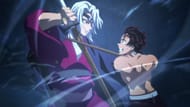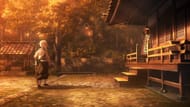The long-running One Piece anime and the Demon Slayer anime that recently started airing its Hashira Training Arc have faced issues regarding filler content. With massive global fanbases, these shows sometimes include filler episodes or content not found in the original manga.
Recently, Demon Slayer: Hashira Training Arc episode 3 has sparked discussions, drawing comparisons with One Piece regarding filler content. This episode stands out as it animated only a small portion of the manga while the rest was anime original content.
This approach has divided fans and critics, raising questions about the necessity and impact of such filler.
Demon Slayer Hashira Training arc episode 3's anime original content highlights a serious filler issue

Episode 3 of the Hashira Training arc has become a focal point for discussions about filler content. Unlike previous episodes that closely followed the manga, this one animated just a page and a half from the original source. The rest of the episode was filled with anime-original scenes, a move that has sparked controversy among fans.
While some appreciate the added depth and character development, others view it as unnecessary padding. This approach is a significant departure from the manga, causing divided opinions.

This issue reminds many of a well-known practice in the One Piece anime. Although it has a relatively low percentage of filler episodes compared to other long-running series, One Piece frequently includes anime-original content within canon episodes.
This technique involves stretching manga chapters into longer sequences, adding new scenes, and extending existing ones. It ensures that the anime doesn't catch up to the manga too quickly, but it can also lead to episodes that feel slow-paced and diluted with filler content.

The Hashira Training arc is a relatively small arc and has only nine chapters in the manga. Usually, anime shows adapt two to three manga chapters per episode. So, this arc could be covered in just a few episodes if they follow that pace.
But, Ufotable Studio decided to extend it to eight episodes. To fill the extra time, they added a lot of filler content. This choice got mixed reactions from viewers.
Demon Slayer: How filler content impacts viewer engagement and storytelling

In Demon Slayer, adding filler to the Hashira Training arc was a strategic choice by Ufotable Studio. They aimed to deepen the audience's connection with the characters. By expanding training sequences and interpersonal dynamics, the studio wanted viewers to become more emotionally invested.
This approach can also introduce new elements that may be explored later, creating a richer, more immersive world for fans to enjoy.
However, the accomplishment of this method depends on the excellence and significance of the filler information. Poorly executed filler can prompt dissatisfaction and disengagement, as witnessed in different anime series. For the Hashira Training arc, maintaining top-notch animation quality and guaranteeing that filler scenes supplement the primary story are vital elements in keeping viewers content.
Final thoughts

The correlation between the two anime series with respect to filler content features a persistent issue inside the anime business. While filler episodes can deliver significant character improvement, they additionally risk alienating fans who favor a more devoted adaptation.
As Studio Ufotable continues to animate the Hashira Training arc, striking the right harmony among unique substance and adherence to the source material will be fundamental in keeping up with the series' ubiquity and basic approval.
Related Links:
- Is Murata a higher-ranked Demon Slayer than Tanjiro? Explained
- "BEST DEMON SLAYER SCENE" — Fans can't stop gushing over Giyu and Tanjiro's Hashira Training scenes
- 10 Demon Slayer characters who deserved more screentime
